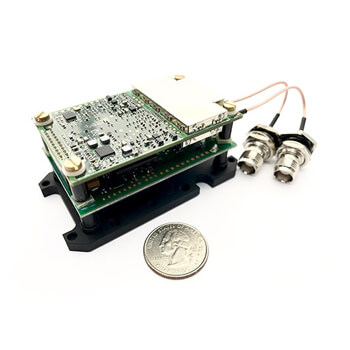At Xponential 2024 in San Diego, Inside GNSS sat down with Jamie Marraccini, CEO of Inertial Labs, to discuss the company’s advanced solutions for GNSS vulnerability and their role in enhancing navigation for UAS operations in GNSS-denied environments.
IGM: Jamie, we’ve been hearing a lot about Inertial Labs, especially regarding GNSS vulnerability and operations in GNSS-denied environments. Can you tell us about Inertial Labs’ solutions for these challenges?
Jamie Marraccini: Inertial Labs has been around for 20 years, focusing on building core technologies in inertial navigation. We develop inertial sensors, from small ones suitable for GNSS navigation to high-performance ones competing with fiber optic gyros. We combine these with magnetometers, receivers, and other inputs to create robust navigation solutions.
IGM: So, you’re GNSS receiver agnostic and integrate with various systems based on customer needs?
Jamie Marraccini: Exactly. We test and work with different receivers to choose the right one for each project. This flexibility allows us to tailor solutions to specific customer requirements, ensuring optimal performance and integration.
IGM: Beyond inertial sensors, what other technologies are you incorporating into your solutions?
Jamie Marraccini: We’ve expanded to include computer vision, antennas for receiver protection, and time-of-flight sensors. We also integrate data from various sources, such as altimeters, to enhance navigation. These technologies allow us to create comprehensive, customizable solutions for different platforms and use cases.
IGM: How do you ensure these solutions meet the specific needs of your customers?
Jamie Marraccini: We engage with customers early in the project to understand their use cases and requirements. Our mission computers are open for users to modify, enabling collaborative integration. This approach helps us recommend the right components and configurations to solve their navigation problems effectively.
IGM: Given your extensive experience, what trends are you seeing in terms of navigation requirements and solutions?
Jamie Marraccini: The main trends are reducing size, weight, power, and cost. There’s also a growing need for multi-input solutions tailored to specific use cases. Many customers are now looking for robust navigation in GNSS-denied environments, which requires innovative approaches and technologies.
IGM: How important is it to educate your customers about the complexities of GNSS-denied environments?
Jamie Marraccini: It’s crucial. Many developers focus on building their vehicles and take navigation for granted, assuming GPS will always be available. We help them understand the challenges of GNSS denial and the importance of incorporating multiple inputs for a reliable navigation solution.
IGM: What are some specific applications where Inertial Labs’ solutions are making a significant impact?
Jamie Marraccini: We’re seeing a lot of activity in airborne operations, both fixed-wing and multi-rotor, as well as surface vessels and unmanned ground vehicles. Our solutions are used in diverse applications, from extending operational ranges to ensuring precise navigation in complex environments.
IGM: How does Inertial Labs optimize performance for different customer requirements?
Jamie Marraccini: We tailor our solutions based on the customer’s operational needs, ensuring the right balance of performance, size, weight, and cost. Our goal is to provide reliable and effective navigation solutions that help our customers achieve their mission objectives.
For more information, visit Inertial Labs.






